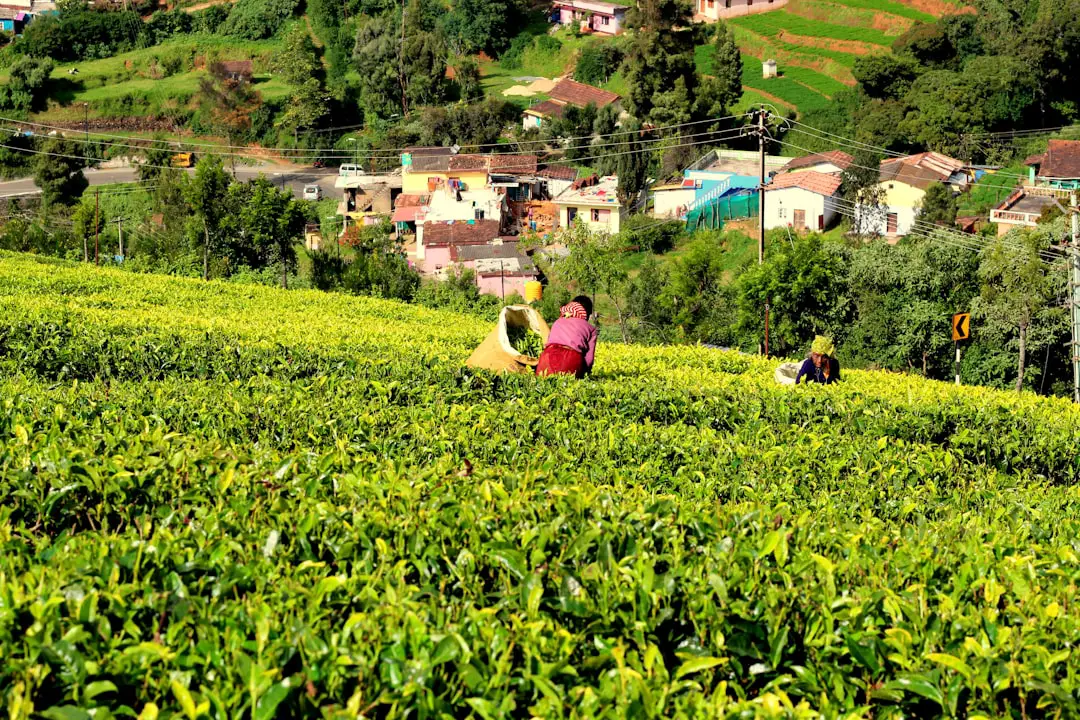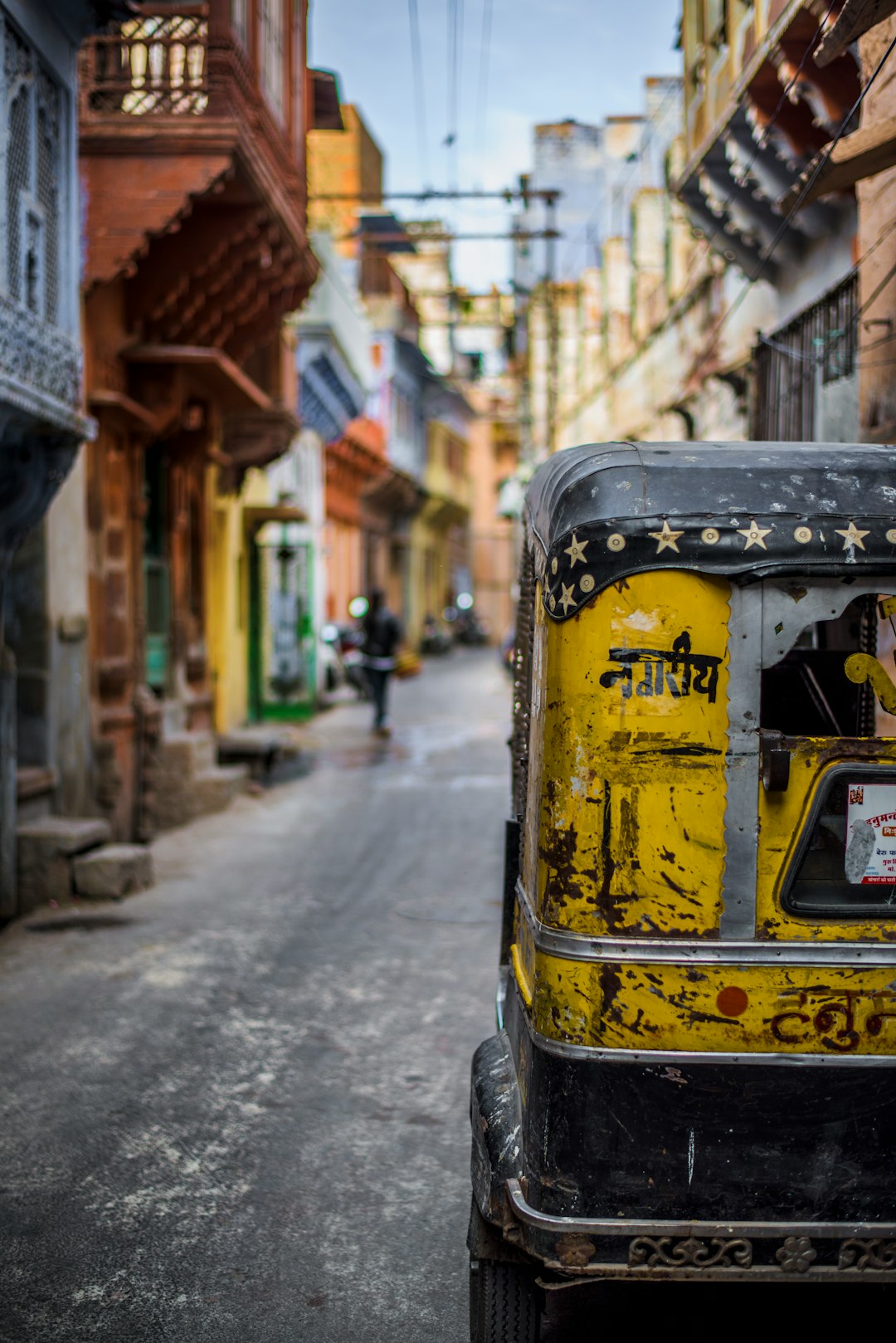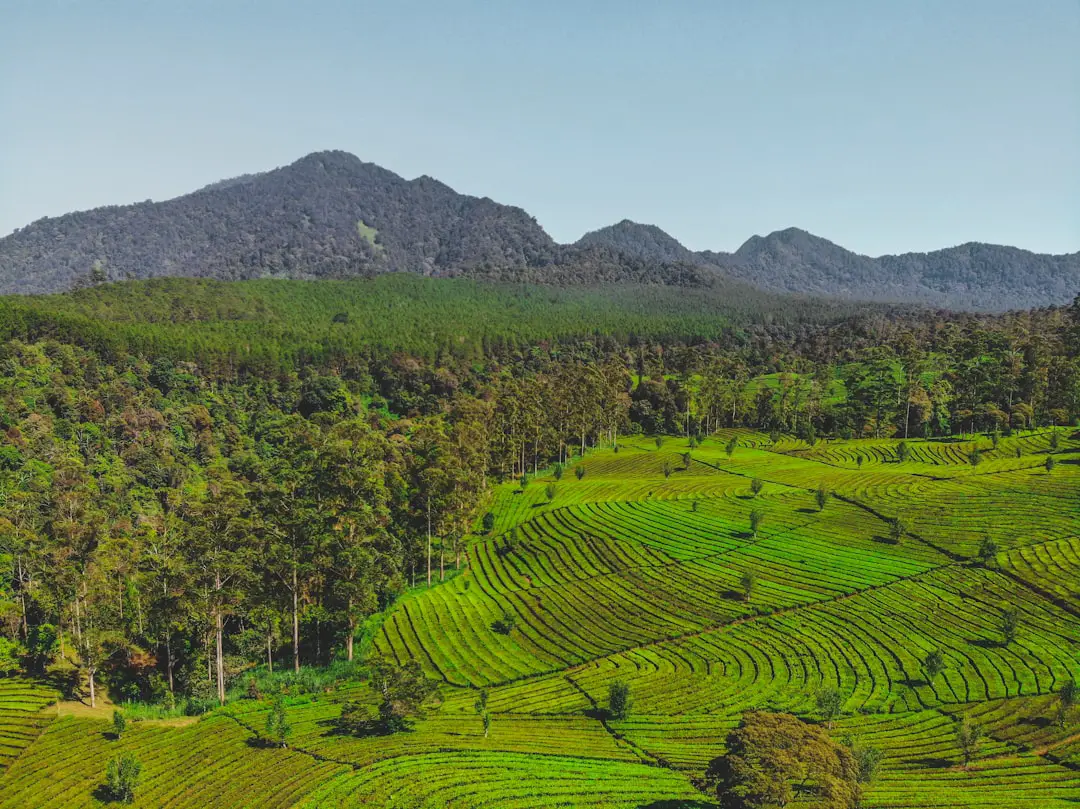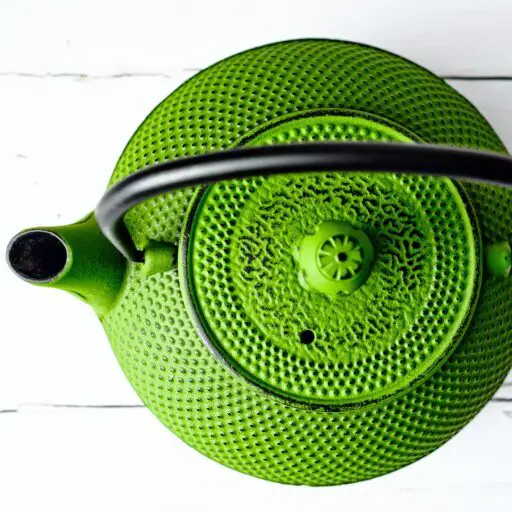Support our educational content for free when you purchase through links on our site. Learn more
Which Country is the Largest Producer of Tea in the World? Discover the Top 15 Tea Giants of 2024! ☕🌍

Have you ever wondered which country reigns supreme in the world of tea production? You might be surprised to learn that tea is not just a beverage; it’s a cultural phenomenon that connects millions of people across the globe. In this article, we’ll unveil the top 15 tea-producing countries in 2024, diving deep into the unique characteristics that make each region’s tea special. From the lush hills of China, where tea was born, to the aromatic gardens of India, each country has its own story to tell.
As tea enthusiasts at Tea Brands™, we’ve tasted our way through this fascinating world, and we can’t wait to share what we’ve learned! Did you know that China produces 40% of the world’s tea? Or that India’s Assam tea is a staple in many breakfast blends? Join us as we explore these tea giants and more, revealing not just the numbers but the rich cultural heritage behind each cup. Grab your favorite brew, and let’s steep into the details!
Key Takeaways
- China is the largest producer of tea, responsible for 40% of global production.
- India ranks second, known for its distinct Assam and Darjeeling teas.
- The top 15 tea-producing countries each offer unique flavors and cultural significance.
- Sustainability is becoming increasingly important in tea farming practices.
- Explore the economic impact of tea production on communities worldwide.
Ready to elevate your tea experience? Check out our recommendations for top tea brands and explore the world of tea like never before!
- 👉 Shop Top Tea Brands:
- Twinings: Amazon | Twinings Official Website
- Harney & Sons: Amazon | Harney & Sons Official Website
- Numi Organic Tea: Amazon | Numi Official Website
Dive into the world of tea and discover your next favorite brew!
Table of Contents
- Quick Tips and Facts About Tea Production
- The Global Tea Landscape: An Overview of Tea-Producing Countries
- Which Country Reigns Supreme? The Largest Tea Producers Revealed
- A Deep Dive into the Top 15 Tea-Producing Countries in 2024
- The Art of Tea Cultivation: How Tea is Grown and Harvested
- Tea Varieties: What Makes Each Country’s Tea Unique?
- The Economic Impact of Tea Production on Global Markets
- Sustainability in Tea Farming: Challenges and Innovations
- Cultural Significance of Tea in Major Producing Countries
- The Future of Tea Production: Trends and Predictions
- Conclusion: The Ever-Evolving World of Tea
- Recommended Links for Tea Lovers
- FAQ: Your Burning Questions About Tea Production
- Reference Links for Further Reading
This table of contents will guide you through the fascinating world of tea production, exploring everything from the leading countries in tea cultivation to the cultural significance of this beloved beverage. Ready to steep your knowledge? Let’s dive in!
Quick Tips and Facts About Tea Production
Did you know that tea is the second most consumed beverage in the world, after water? 🤯 That’s a lot of tea! As tea experts at Tea Brands™, specializing in helping you “Sip and Savor the Finest Tea,” we’re here to spill the tea (pun intended!) on tea production around the globe.
Here are some quick facts to get you started:
- China is the undisputed king of tea production, responsible for a whopping 40% of the world’s tea. Their tea history dates back centuries, and they produce a dazzling array of tea types.
- India comes in a respectable second place, known for its robust Assam and delicate Darjeeling teas.
- Kenya is a rising star in the tea world, producing primarily black tea using the efficient CTC (Crush, Tear, Curl) method.
- Tea production is a significant source of income for many countries, providing jobs and boosting economies.
- Sustainability is a growing concern in the tea industry, with a focus on ethical labor practices and environmentally friendly farming methods.
Want to learn more about the fascinating world of tea? Read on to discover the top tea-producing countries and the unique characteristics of their teas! And don’t forget to check out our article on Discover the Top 15 Tea Brands in America for 2020! for insights into the American tea market.
The Global Tea Landscape: An Overview of Tea-Producing Countries
From the misty mountains of China to the sunny hills of Sri Lanka, tea cultivation spans the globe. Each tea-producing region boasts its own unique terroir, climate, and cultural practices that influence the flavor profile of its tea.
- Asia dominates the tea production scene, with China and India leading the pack. Other notable Asian producers include Sri Lanka, Vietnam, and Japan, each known for their distinctive tea varieties.
- Africa is another major player in the tea industry, with Kenya holding the title of the largest tea exporter.
- South America, while not as prolific as Asia or Africa, is home to unique tea traditions, with Argentina being a major producer of Yerba Mate.
The diversity of tea-producing countries ensures a wide range of flavors and aromas to tantalize your taste buds. Whether you prefer a delicate white tea from China or a robust black tea from Kenya, there’s a world of tea waiting to be explored!
Which Country Reigns Supreme? The Largest Tea Producers Revealed
Drumroll, please! 🥁 The crown for the largest tea producer in the world goes to… China! 🇨🇳
China produces a staggering 2.4 million tonnes of tea annually, accounting for approximately 40% of global production. From the delicate green teas of Zhejiang to the earthy pu-erh teas of Yunnan, China offers an unparalleled diversity of tea varieties.
But don’t underestimate the other tea giants! India holds a strong second place, producing around 900,000 tonnes annually. India’s tea industry is renowned for its strong Assam teas, often used in breakfast blends, and its aromatic Darjeeling teas, prized for their delicate muscatel flavor.
Stay tuned as we delve deeper into the top tea-producing countries and uncover the secrets behind their unique tea cultures!
A Deep Dive into the Top 15 Tea-Producing Countries in 2024
Get ready for a whirlwind tour of the world’s top tea-producing powerhouses! We’ll explore the unique characteristics of each country’s tea industry, from the varieties they produce to their cultural significance.
| Rank | Country | Production (Tonnes) | Famous For | Key Regions | Cultural Significance |
|---|---|---|---|---|---|
| 1 | China | 2.4 million | Green tea, black tea, oolong tea, white tea, pu-erh tea | Yunnan, Fujian, Zhejiang, Sichuan | Tea originated in China and is deeply ingrained in Chinese culture, with elaborate tea ceremonies and a focus on the art of tea brewing. |
| 2 | India | 900,000 | Assam tea, Darjeeling tea, Nilgiri tea, Masala Chai | Assam, Darjeeling, Nilgiri | Tea is an integral part of Indian life, enjoyed throughout the day, from morning “chai” to evening gatherings. |
| 3 | Kenya | 305,000 | Black tea (CTC method) | Rift Valley | Tea is a major export crop for Kenya, contributing significantly to the country’s economy. |
| 4 | Sri Lanka | 300,000 | Ceylon tea (black tea) | Central Highlands | Tea production has a long and storied history in Sri Lanka, dating back to the colonial era. |
| 5 | Vietnam | 117,000 | Green tea, black tea, jasmine tea, lotus tea | Lam Dong, Thai Nguyen | Tea is a popular beverage in Vietnam, often enjoyed in both traditional and modern settings. |
| 6 | Turkey | 175,000 | Turkish tea (black tea) | Rize | Tea is an essential part of Turkish hospitality, served throughout the day in distinctive tulip-shaped glasses. |
| 7 | Indonesia | 157,000 | Black tea, green tea | Java, Sumatra | Tea is enjoyed throughout Indonesia, often brewed with spices like ginger and lemongrass. |
| 8 | Japan | 89,000 | Green tea (Matcha, Sencha, Genmaicha) | Shizuoka, Kagoshima | Japan has a rich tea culture, with elaborate tea ceremonies (Sado) and a focus on the aesthetics of tea preparation. |
| 9 | Iran | 84,000 | Black tea | Gilan | Tea is an integral part of Iranian culture, served with sugar cubes and enjoyed in social gatherings. |
| 10 | Argentina | 70,000 | Yerba Mate | Misiones, Corrientes | Yerba Mate is a traditional South American beverage, consumed socially from a shared gourd with a metal straw (bombilla). |
| 11 | Bangladesh | Not in the top 10 | Black tea varieties | Sylhet | Bangladesh is a significant tea producer, known for its black tea varieties. |
| 12 | Malawi | Not in the top 10 | Black tea exports | Thyolo, Mulanje | Malawi is a significant tea producer in Africa, known for its black tea exports. |
| 13 | Uganda | Not in the top 10 | Black tea for export | Western Uganda | Uganda is another important tea producer in Africa, primarily producing black tea for export. |
| 14 | Tanzania | Not in the top 10 | Black and specialty teas | Southern Highlands | Tanzania is known for its tea plantations, producing both black and specialty teas. |
| 15 | Rwanda | Not in the top 10 | High-quality black tea | Western Province | Rwanda is a relatively new entrant to the tea market but has quickly gained a reputation for its high-quality black tea. |
This list highlights the global reach of tea production and the unique contributions of each country to the world’s teacup. From the traditional tea ceremonies of Japan to the social mate drinking rituals of Argentina, tea transcends borders and brings people together over a shared love for this beloved beverage.
The Art of Tea Cultivation: How Tea is Grown and Harvested
Have you ever wondered how those delicate tea leaves transform from a plant into your steaming cup of tea? The journey from tea garden to teacup is a fascinating one, involving a delicate balance of nature’s elements and human expertise.
From Seed to Shrub: The Life Cycle of a Tea Plant
- Planting: Tea plants (Camellia sinensis) thrive in tropical and subtropical climates with ample rainfall. They are typically grown on hillsides or slopes to ensure good drainage.
- Growing: It takes about 3-4 years for a tea plant to mature and produce leaves suitable for harvesting.
- Pruning: Regular pruning is essential to maintain the shape and health of the tea plant, encouraging new growth and maximizing leaf production.
The Art of the Harvest: Plucking the Perfect Leaves
- Hand-Plucking: The finest teas are still hand-plucked, ensuring that only the youngest, most tender leaves are selected. This labor-intensive process is a testament to the artistry of tea production.
- Mechanical Harvesting: Larger tea estates often use mechanical harvesters to increase efficiency, especially for teas destined for tea bags or blends.
Withering: The First Step in Tea Processing
Once harvested, tea leaves begin to wilt and lose moisture. This natural process, known as withering, is crucial for developing flavor and aroma.
- Natural Withering: Leaves are spread out in large trays or bamboo mats, allowing them to dry naturally in the open air.
- Trough Withering: In controlled environments, leaves are withered in large troughs with regulated airflow and humidity.
Stay tuned as we delve deeper into the fascinating world of tea processing and discover how these withered leaves are transformed into the various types of tea we know and love!
Tea Varieties: What Makes Each Country’s Tea Unique?
From the emerald green hues of Japanese Matcha to the rich, malty aroma of Indian Assam, the world of tea offers an astounding variety of flavors and aromas. But what makes each country’s tea so unique?
Terroir: The Taste of Place
Just like wine, tea’s flavor is deeply influenced by its terroir—the unique combination of soil, climate, altitude, and even the surrounding plant life.
- High Altitude Teas: Teas grown at higher elevations, such as Darjeeling in India and some Chinese green teas, are known for their delicate flavors and floral aromas.
- Lowland Teas: Teas grown in lower altitudes, like Assam in India and many African teas, tend to have bolder, more robust flavors.
Processing Methods: Shaping the Flavor Profile
The way tea leaves are processed after harvesting plays a crucial role in determining the final flavor and appearance of the tea.
- Green Tea: Minimally processed to preserve its natural green color and grassy flavor.
- Black Tea: Fully oxidized, resulting in a darker color and a more robust, malty flavor.
- Oolong Tea: Partially oxidized, offering a wide range of flavor profiles from floral and fruity to toasty and nutty.
- White Tea: The least processed tea, known for its delicate, slightly sweet flavor and pale color.
- Pu-erh Tea: A unique fermented tea from China, prized for its earthy, complex flavors that develop with age.
Cultural Influences: Tea Traditions Around the World
Beyond terroir and processing, cultural practices also contribute to the uniqueness of tea in different countries.
- Japan: The Japanese tea ceremony (Sado) is a highly ritualized practice that elevates tea preparation to an art form.
- India: Masala Chai, a blend of black tea, milk, and spices, is a beloved beverage in India, enjoyed throughout the day.
- Morocco: Mint tea, a refreshing blend of green tea and fresh mint leaves, is a symbol of hospitality in Morocco.
The world of tea is a journey for the senses, offering a captivating exploration of flavor, aroma, and cultural traditions. So brew yourself a cup, sit back, and savor the diversity of this beloved beverage!
The Economic Impact of Tea Production on Global Markets
Behind every soothing sip of tea lies a complex global industry that provides livelihoods for millions of people and contributes significantly to the economies of many countries.
Tea as a Cash Crop: From Plantations to Exports
- Major Producers: China and India are the world’s leading tea producers, but countries like Kenya, Sri Lanka, and Vietnam also rely heavily on tea exports for revenue.
- Employment: The tea industry provides employment opportunities for millions of people worldwide, from tea pluckers and factory workers to tea traders and exporters.
- Foreign Exchange Earnings: Tea exports generate significant foreign exchange earnings for producing countries, contributing to economic growth and development.
The Tea Trade: A Global Commodity
- Auctions: Tea is traded on global commodity markets, with major auctions held in countries like India, Sri Lanka, and Kenya.
- Buyers: Large tea companies, blenders, and retailers from around the world participate in these auctions, purchasing tea to meet global demand.
- Value Chain: The tea trade involves a complex value chain, from producers and processors to exporters, importers, wholesalers, and finally, retailers.
Challenges and Opportunities in the Global Tea Market
- Price Fluctuations: Like any commodity, tea prices are subject to fluctuations based on factors like supply and demand, weather conditions, and political instability.
- Climate Change: Climate change poses a significant threat to tea production, as rising temperatures, droughts, and extreme weather events can impact crop yields and quality.
- Sustainable Practices: There is growing consumer demand for sustainably produced tea, prompting the industry to adopt ethical labor practices, environmentally friendly farming methods, and fair trade certifications.
The global tea industry faces both challenges and opportunities in the years to come. By embracing sustainable practices, adapting to climate change, and ensuring fair wages and working conditions for tea workers, the industry can continue to thrive while providing economic benefits to producing countries and delivering a beloved beverage to tea lovers worldwide.
Sustainability in Tea Farming: Challenges and Innovations
As consumers become increasingly aware of the environmental and social impact of their purchasing decisions, the tea industry is facing growing pressure to adopt sustainable practices. From the tea gardens to your teacup, there are numerous challenges and innovations shaping the future of sustainable tea farming.
Environmental Concerns: Protecting the Planet, One Cup at a Time
- Pesticide Use: Conventional tea farming often involves the use of pesticides, which can harm biodiversity, pollute water sources, and pose risks to human health.
- Deforestation: The expansion of tea plantations can contribute to deforestation, particularly in biodiversity hotspots.
- Soil Degradation: Intensive farming practices can lead to soil erosion, nutrient depletion, and reduced soil fertility.
Social Responsibility: Ensuring Fair Treatment for Tea Workers
- Working Conditions: Tea workers, often from marginalized communities, may face challenging working conditions, including low wages, long hours, and exposure to hazardous chemicals.
- Child Labor: Child labor remains a concern in some tea-producing regions, depriving children of education and perpetuating cycles of poverty.
- Community Development: Sustainable tea farming should contribute to the well-being of local communities, supporting education, healthcare, and infrastructure development.
Innovations and Certifications: Paving the Way for a More Sustainable Future
- Organic Farming: Organic tea farming prohibits the use of synthetic pesticides, herbicides, and fertilizers, promoting biodiversity and protecting the environment.
- Fair Trade Certification: Fair Trade certification ensures fair prices for farmers, safe working conditions, and investments in community development projects.
- Rainforest Alliance Certification: The Rainforest Alliance promotes sustainable agriculture, biodiversity conservation, and improved livelihoods for farmers.
- Ethical Tea Partnership (ETP): The ETP is a non-profit organization working to improve the lives of tea workers and protect the environment in tea-growing regions.
By supporting tea brands and certifications that prioritize sustainability, consumers can play a role in promoting a more ethical and environmentally responsible tea industry. Look for certifications like Fair Trade, Organic, Rainforest Alliance, and support brands that are transparent about their sourcing and labor practices. Your choices can make a difference!
Cultural Significance of Tea in Major Producing Countries
Tea is more than just a beverage; it’s a cultural touchstone, a social ritual, and a source of national pride in many countries around the world. Let’s explore the fascinating cultural significance of tea in some of the major producing nations.
China: The Birthplace of Tea and Tea Culture 🇨🇳
- Legend of Shennong: According to legend, tea was discovered in China by Emperor Shennong in 2737 BC.
- Tea Ceremony: The Chinese tea ceremony (Gongfu Cha) is a highly ritualized practice that emphasizes the aesthetics of tea preparation and the appreciation of its flavors.
- Symbolism: Tea is associated with hospitality, respect, and harmony in Chinese culture.
Japan: The Art of Tea and Zen Philosophy 🇯🇵
- Introduction of Tea: Tea was introduced to Japan from China in the 9th century AD.
- Japanese Tea Ceremony (Sado): The Japanese tea ceremony is a deeply spiritual practice rooted in Zen Buddhist principles, emphasizing simplicity, mindfulness, and the appreciation of the present moment.
- Matcha: Matcha, a finely ground green tea powder, is central to the Japanese tea ceremony and has become increasingly popular worldwide.
India: Chai, a National Obsession 🇮🇳
- British Influence: Tea cultivation was introduced to India by the British in the 19th century.
- Masala Chai: Masala chai, a blend of black tea, milk, and spices like cardamom, ginger, and cinnamon, is a national obsession in India, enjoyed throughout the day.
- Street Food Culture: Chai is an integral part of Indian street food culture, often sold by “chai wallahs” who brew and serve it with a theatrical flourish.
Britain: A Nation of Tea Lovers 🇬🇧
- Afternoon Tea: Afternoon tea, a tradition introduced in the 19th century, is a quintessential British ritual, involving tea, sandwiches, scones, and pastries.
- Tea Culture: Tea is deeply ingrained in British culture, often associated with comfort, warmth, and social gatherings.
Morocco: Mint Tea, a Symbol of Hospitality 🇲🇦
- Green Tea with Mint: Moroccan mint tea is a refreshing blend of green tea, fresh mint leaves, and sugar.
- Hospitality Ritual: Serving mint tea is a sign of hospitality and welcome in Moroccan culture, often prepared and poured from a height to create a frothy texture.
These are just a few examples of the rich and diverse cultural significance of tea around the world. From ancient rituals to modern-day obsessions, tea continues to bring people together and provide a sense of comfort, connection, and tradition.
The Future of Tea Production: Trends and Predictions
The world of tea is constantly evolving, influenced by changing consumer preferences, technological advancements, and global challenges. Let’s peer into our teacup and explore some of the trends and predictions shaping the future of tea production.
1. Rising Demand for Specialty and Premium Teas 📈
- Unique Flavors and Origins: Consumers are increasingly seeking out unique and exotic tea varieties, exploring single-origin teas, rare cultivars, and innovative flavor combinations.
- Artisan and Small-Batch Teas: There is a growing appreciation for artisan and small-batch teas, crafted with meticulous care and attention to detail.
- Direct Trade and Transparency: Consumers are demanding greater transparency in the tea supply chain, seeking out brands that engage in direct trade practices and support ethical sourcing.
2. Sustainability: The Future of Tea is Green 🌱
- Organic and Biodynamic Farming: Organic and biodynamic farming practices will continue to gain traction as consumers prioritize environmentally friendly and sustainable tea production.
- Climate-Resilient Cultivars: Research and development efforts are focused on developing climate-resilient tea cultivars that can withstand the challenges of climate change, such as droughts, pests, and diseases.
- Reducing Environmental Footprint: The tea industry is exploring innovative ways to reduce its environmental footprint, from reducing water consumption and waste to adopting renewable energy sources.
3. Technology and Innovation: Brewing the Future of Tea 🔬
- Precision Agriculture: Precision agriculture technologies, such as sensors, drones, and data analytics, are being used to optimize tea cultivation, improve yields, and reduce environmental impact.
- Blockchain Technology: Blockchain technology is being explored as a way to enhance transparency and traceability in the tea supply chain, ensuring fair trade practices and ethical sourcing.
- E-commerce and Direct-to-Consumer Sales: The rise of e-commerce and direct-to-consumer sales models is providing tea producers with new avenues to reach consumers and share their stories.
4. Health and Wellness: Tea as a Functional Beverage 🌿
- Antioxidant Properties: Tea is rich in antioxidants, which are beneficial for overall health and well-being.
- Functional Tea Blends: Functional tea blends, incorporating herbs, spices, and botanicals with specific health benefits, are gaining popularity.
- Mindfulness and Relaxation: Tea rituals and mindful tea consumption are being embraced for their calming and stress-reducing effects.
The future of tea production is brimming with possibilities. By embracing sustainability, innovation, and a consumer-centric approach, the tea industry can continue to thrive, providing tea lovers around the world with exceptional tea experiences while ensuring a brighter future for the planet and its people.
Conclusion: Sip, Savor, and Celebrate the World of Tea

As we wrap up this deep dive into the fascinating world of tea production, it’s clear that tea is more than just a beverage; it’s a global phenomenon that binds cultures, economies, and individuals together. From the lush hills of China, the aromatic gardens of India, to the vibrant tea markets of Kenya, each country brings its unique flair to the tea we love.
In summary, China reigns supreme as the largest producer of tea, followed closely by India, with Kenya and Sri Lanka making significant contributions as well. Each country offers distinct flavors, processing methods, and cultural significance that elevate tea from a simple drink to an experience worth savoring.
So, whether you’re sipping a delicate Darjeeling or a robust Kenyan black tea, remember that you’re partaking in a rich tapestry of history, culture, and community. We encourage you to explore different teas and support sustainable practices in the industry. Your choice matters!
Recommended Links for Tea Lovers
-
👉 Shop Top Tea Brands:
- Twinings: Amazon | Twinings Official Website
- Harney & Sons: Amazon | Harney & Sons Official Website
- Numi Organic Tea: Amazon | Numi Official Website
-
Recommended Books on Tea:
FAQ: Your Burning Questions About Tea Production

Which country is the 2nd largest producer of tea?
India holds the title of the second-largest producer of tea in the world, producing approximately 900,000 tonnes annually. This country is renowned for its diverse tea varieties, including Assam, Darjeeling, and Nilgiri, each with unique flavor profiles.
What are the top 5 tea producing countries?
The top five tea-producing countries are:
- China – 2.4 million tonnes
- India – 900,000 tonnes
- Kenya – 305,000 tonnes
- Sri Lanka – 300,000 tonnes
- Vietnam – 117,000 tonnes
These countries dominate the global tea market and contribute significantly to the diversity of tea available to consumers.
What is the rank of tea production in India?
India ranks second in the world for tea production, following China. The country is known for its rich tea heritage, with regions like Assam and Darjeeling producing some of the finest teas globally.
Read more about “The 15 Best Tea Brands in the World … 🍵: Find Your Perfect Cup!”
Which country has the best tea in the world?
The “best” tea is subjective and often depends on personal preference. However, China is frequently celebrated for its exceptional quality and variety, including prized teas like Longjing (Dragon Well) and Tieguanyin (Iron Goddess of Mercy). India also has a strong reputation, particularly for its Darjeeling and Assam teas. Ultimately, the best tea is the one that brings you joy!
What are the health benefits of tea?
Tea is packed with antioxidants and has been associated with various health benefits, including improved heart health, enhanced metabolism, and reduced risk of chronic diseases. Different types of tea offer unique benefits; for instance, green tea is known for its metabolism-boosting properties, while herbal teas can aid in digestion and relaxation.
Read more about “What is America’s Favorite Tea Brand? Discover the Top 10 Choices for 2024! 🍵”
How is tea processed?
Tea processing involves several steps, including withering, rolling, oxidation, and drying. Each type of tea undergoes different processing techniques, which influence its flavor, aroma, and appearance. For example, black tea is fully oxidized, while green tea is minimally processed to preserve its natural green color.
Read more about “Which Tea is the Purest and Least Processed of All Teas? … 🍵”
Reference Links for Further Reading
- Top-10 Tea Producing Countries in the World 2024 – Current Affairs
- Tea Processing – Wikipedia
- Camellios Blog – Top 10 Tea-Producing Countries
- Health Benefits of Tea – Tea Brands™
With this knowledge, you’re now equipped to explore the world of tea like a pro! 🥳 Happy sipping!


